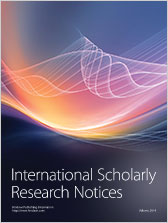Clinical Study: Minimally Invasive Treatment of Infrabony Periodontal Defects Using Dual-Wavelength Laser Therapy

- Rana Al-Falaki, Francis J. Hughes, and Reena Wadia
..... View Full Article
Abstract
Introduction. Surgical management of infrabony defects is an invasive procedure, frequently requiring the use of adjunctive material such as grafts or biologics, which is time-consuming and associated with expense and morbidity to the patient. Lasers in periodontal regeneration have been reported in the literature, with each wavelength having potential benefits through different laser-tissue interactions. The purpose of this case series was to assess the efficacy of a new dual-wavelength protocol in the management of infrabony defects. Materials and Methods. 32 defects (one in each patient) were treated using ultrasonic debridement, followed by flapless application of Erbium, Chromium:Yttrium, Scandium, Gallium, Garnet (Er,Cr:YSGG) laser (wavelength 2780 nm), and final application of diode laser (wavelength 940 nm). Pocket depths (PD) were measured after 6 months and repeat radiographs taken after one year. Results. The mean baseline PD was 8.8 mm (range 6–15 mm) and 6 months later was 2.4 mm (range 2–4 mm), with mean PD reduction being 6.4 ± 1.7 mm (range 3–12 mm). There was a significant gain in relative linear bone height (apical extent of bone), with mean percentage bone fill of 39.7 ± 41.2% and 53% of sites showing at least 40% infill of bone. Conclusion. The results compare favourably with traditional surgery and require further validation through randomised clinical controlled trials.
1. Introduction
The successful management of periodontal pockets associated with infrabony defects through nonsurgical treatment alone is an unpredictable treatment modality. The optimum outcome of such management would be complete pocket resolution and ideally with new attachment formation. In order to achieve this predictably, several regenerative surgical techniques have been developed, alongside the use of a multitude of both osteoconductive or osteoinductive regenerative materials [1]. New attachment formation is otherwise an inconsistent outcome following nonsurgical treatment alone, although it can happen spontaneously, particularly in cases where defects are deep and narrow.
Lasers in periodontal therapy, both surgically and nonsurgically, are becoming more common, but the evidence base is still highly controversial. Generally, the standard of research has been poor and inconsistent, making a general consensus difficult to reach [2–5]. “Lasers” have been grouped together in the literature rather than looking at each wavelength and its potential tissue interactions, so the benefits of certain wavelengths are often diluted in systematic reviews, and the conclusions have to be taken with caution, accepting the limitations of low numbers of studies and inconsistencies in the protocols and methodology [2, 6].
Several different types of lasers have been proposed as alternatives or adjuncts to conventional surgical periodontal therapy, Nd:YAG [7, 8], Er:YAG [9–11], Er,Cr:YSGG [12], and diode lasers [13], and have shown effective use in regeneration or at least some radiographic evidence of bone fill.
Each has different mechanisms of action, with the Erbium lasers not penetrating so deeply and being less bactericidal, but safe to use on root surfaces and bone, while the diodes and Nd:YAG lasers have greater potential to cause thermal damage to the root surface and bone but are more deeply penetrating with more of a photobiomodulatory effect [11]. Laser energy can be delivered though thin flexible fibres or tips, to sites in the periodontal pocket that conventional instrumentation is less able to reach [14].
While in a specialist practice setting, the author had previously reported on the findings of bone fill using a developed protocol of just the Er,Cr:YSGG laser [15]. Therefore, the purpose of this retrospective case series was to assess the effectiveness of using a dual-wavelength approach with the Er,Cr:YSGG (2780 nm) laser and more deeply penetrating diode laser (940 nm) as an adjunct to conventional nonsurgical therapy, in the resolution of periodontal pockets associated with infrabony defects, which in the majority of cases may have otherwise required flapped regenerative or osseous surgery to treat effectively.
..... View Full Article
.png)
